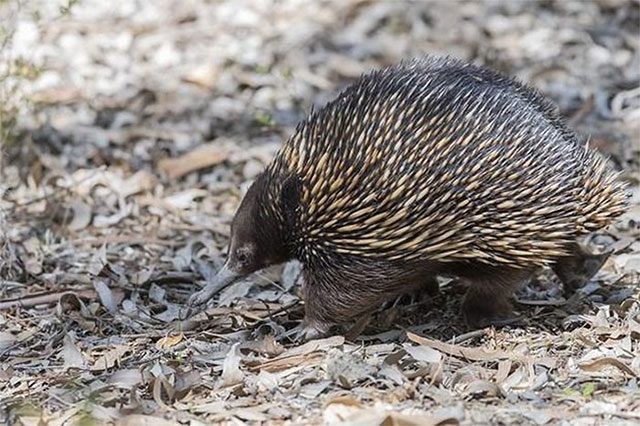Researchers at Curtin University have captured the sounds of the short-beaked echidna as they emit various vocalizations. This marks one of the most elusive sounds in nature.
For the first time, Australian scientists have recorded the sounds of the echidna – the world’s most unique egg-laying mammal.

The echidna. (Source: Wikipedia).
This is one of the most difficult sounds to capture in nature and serves as the first scientific evidence of the sounds produced by this remarkable species.
Researchers from Curtin University in Australia have documented the sounds of the short-beaked echidna as they produce various vocalizations described as “whispers,” “grumbles,” and “snorts.”
The researchers believe that these sounds may be produced when the animals are seeking mates, as the calls only occur during the breeding season.
Dr. Christine Cooper, a wildlife researcher at Dryandra National Park near Narrogin, Western Australia, stated that capturing these rare sounds will help us better understand how echidnas communicate and interact with one another.
Dr. Cooper shared, “Initially, we were surprised to hear their sounds for the first time, but we had no means to record them. On the next occasion, we successfully recorded these sounds, and it was truly exciting.”
Sound production appears to be a very rare behavior in the short-beaked echidna.
In over 20 years of researching the Monotremes (a unique group of egg-laying mammals), Dr. Cooper mentioned that she has only heard their sounds five times. To capture the sounds, the research team used handheld microphones as well as stationary cameras and microphones placed outside the entrance of the burrow that echidnas frequently visit.
Scientists consider this new discovery to be significant in exploring how wildlife evolves on the Australian continent.
The finding that echidnas can communicate with each other through sound, similar to other mammals, suggests that this common trait may stem from a shared ancestor.




















































